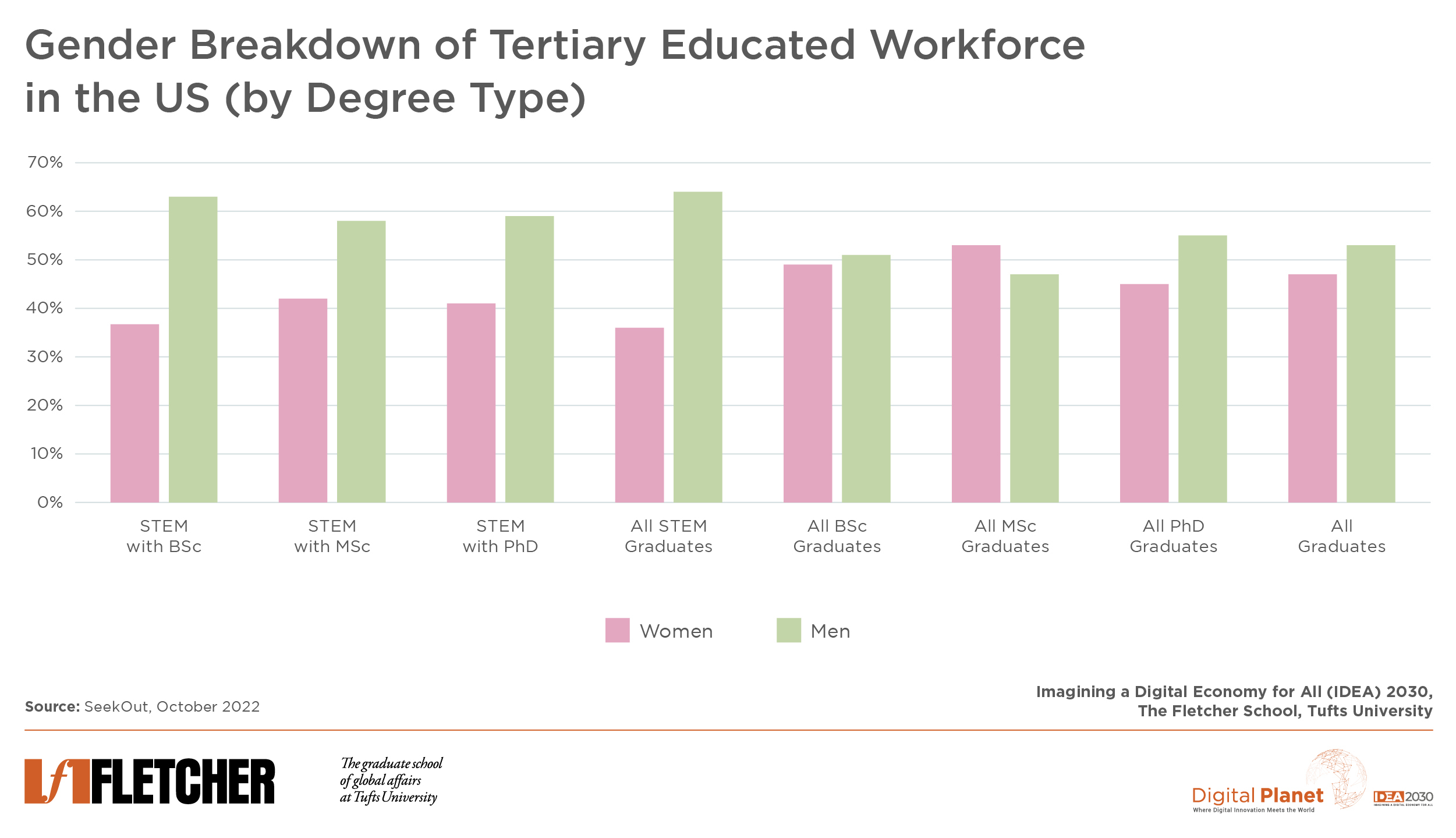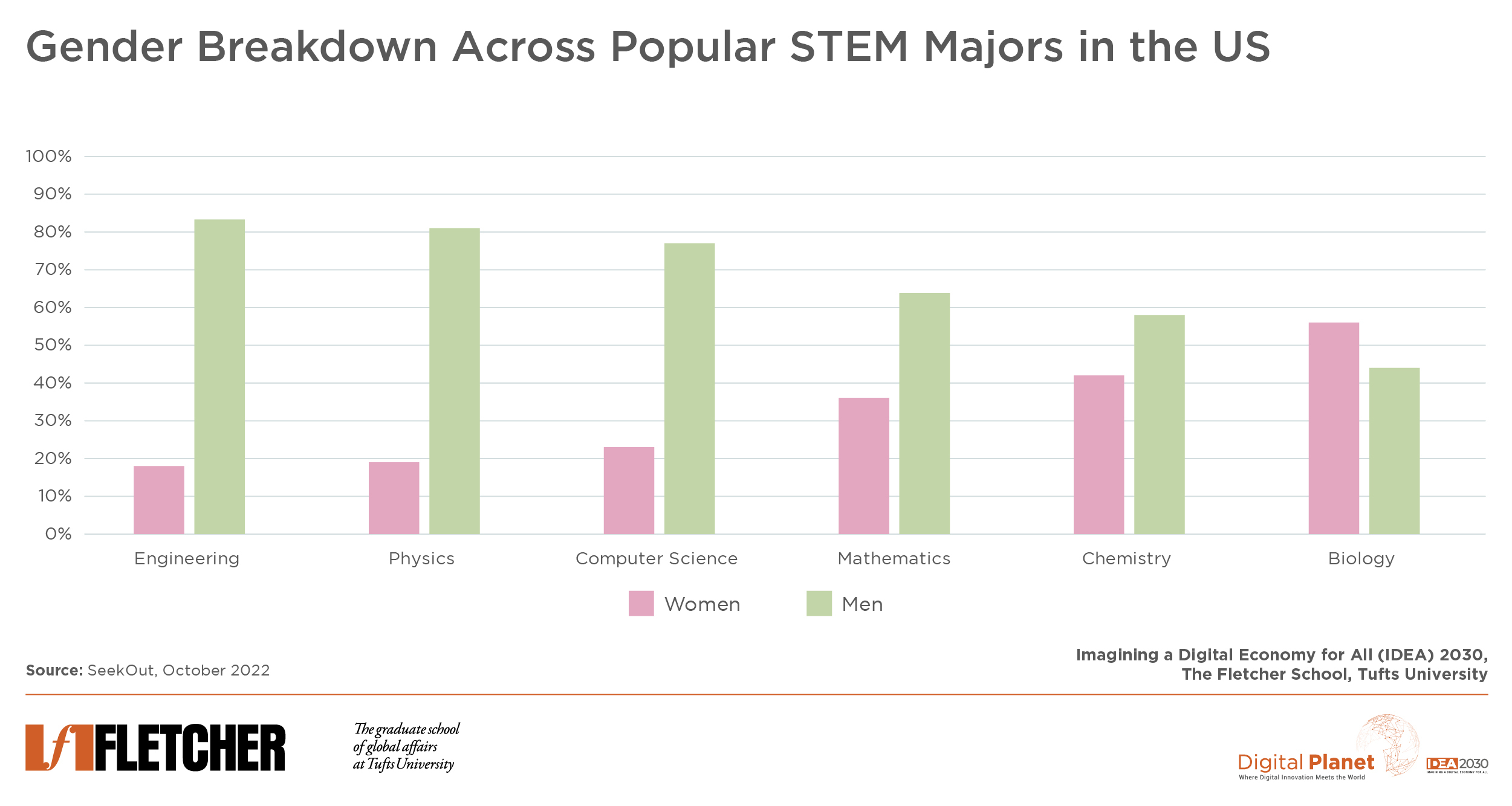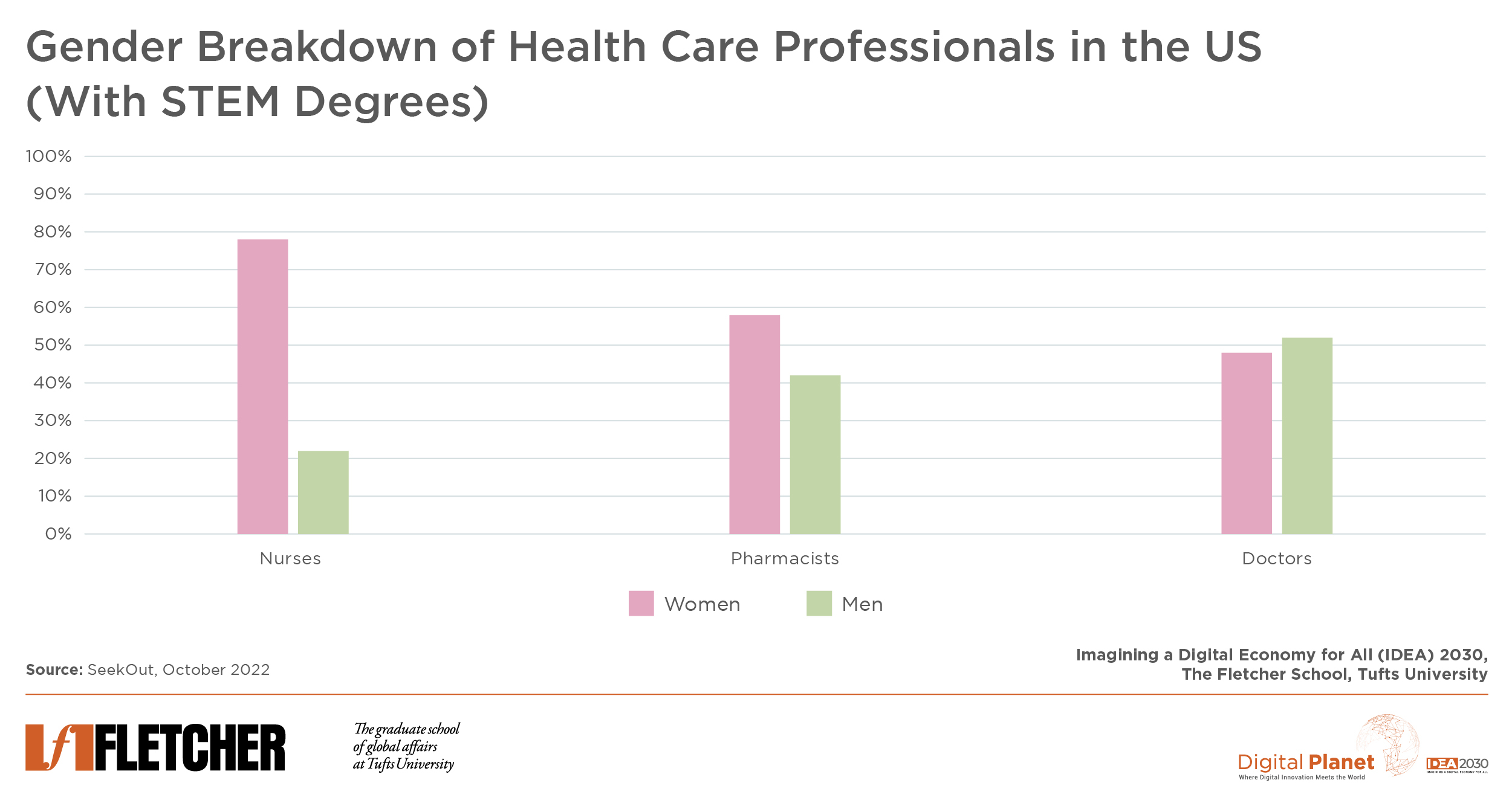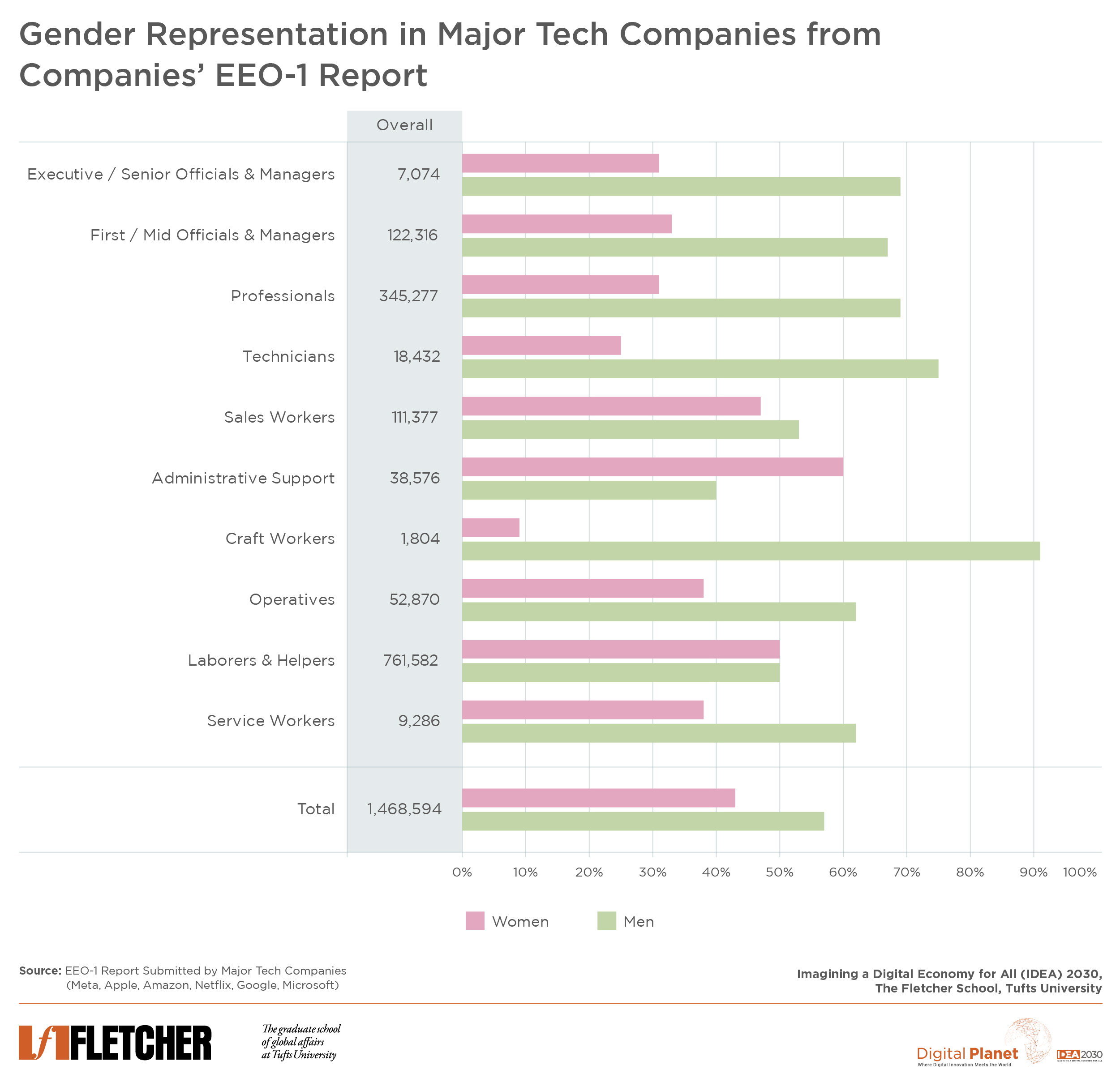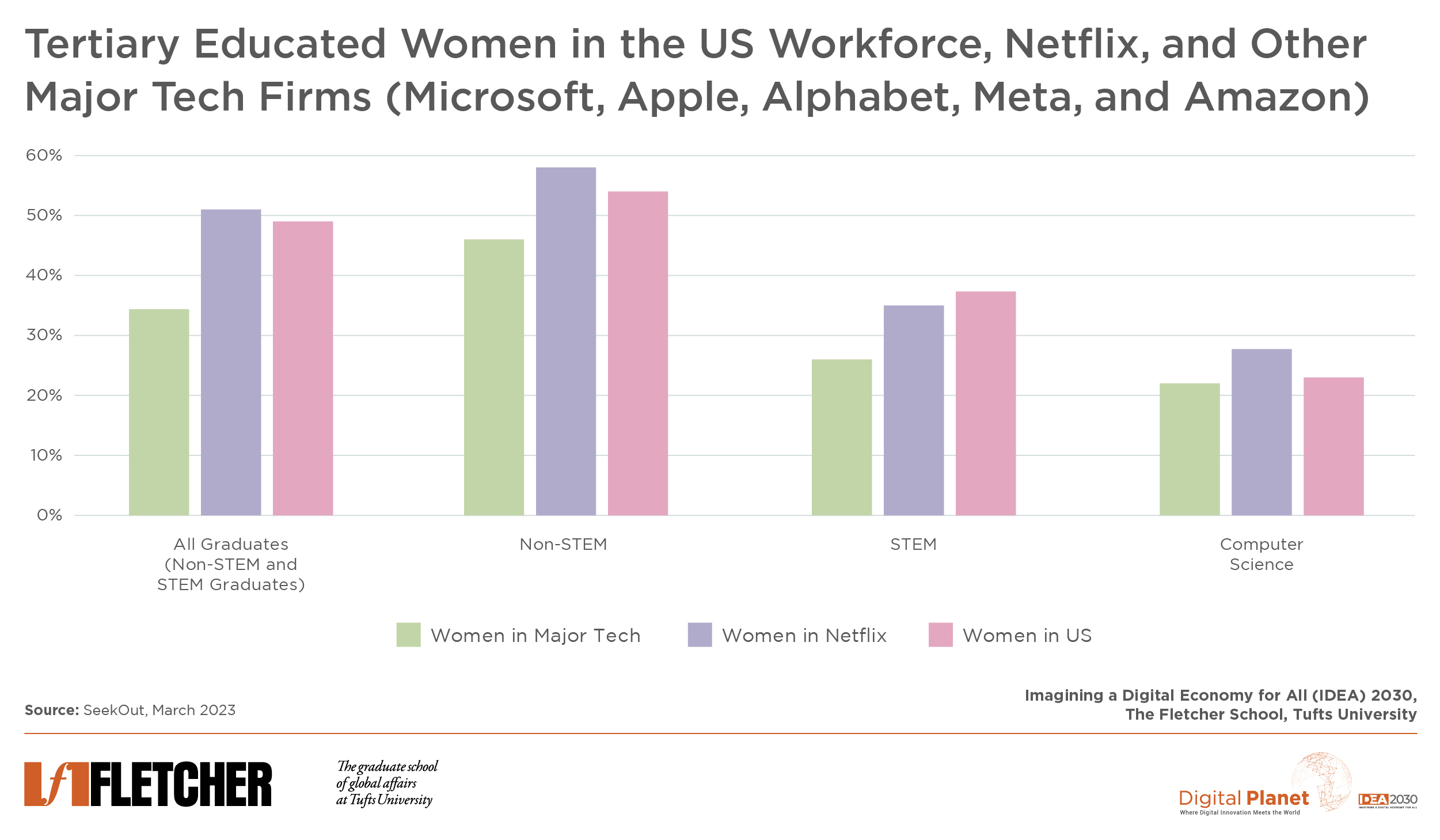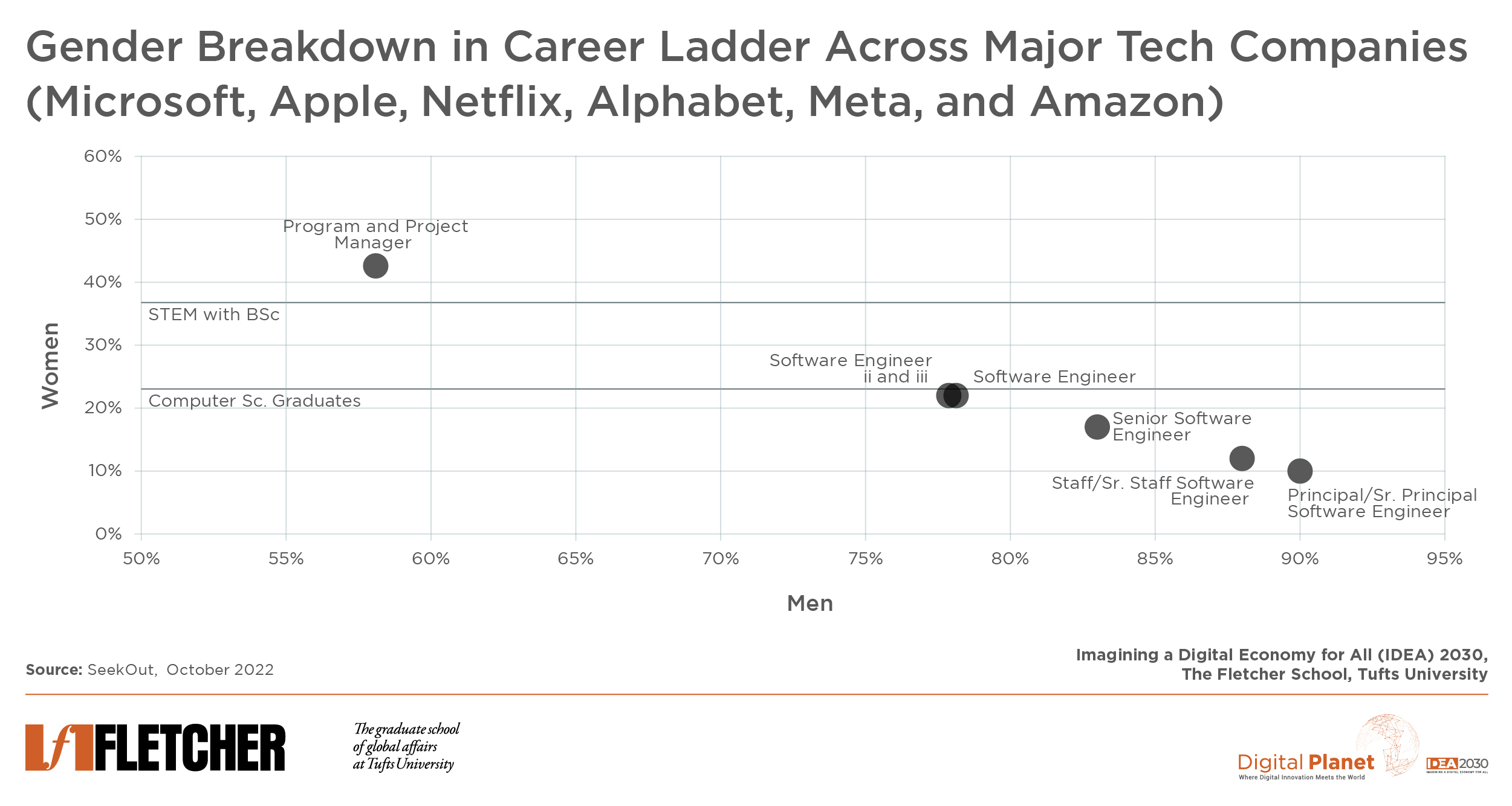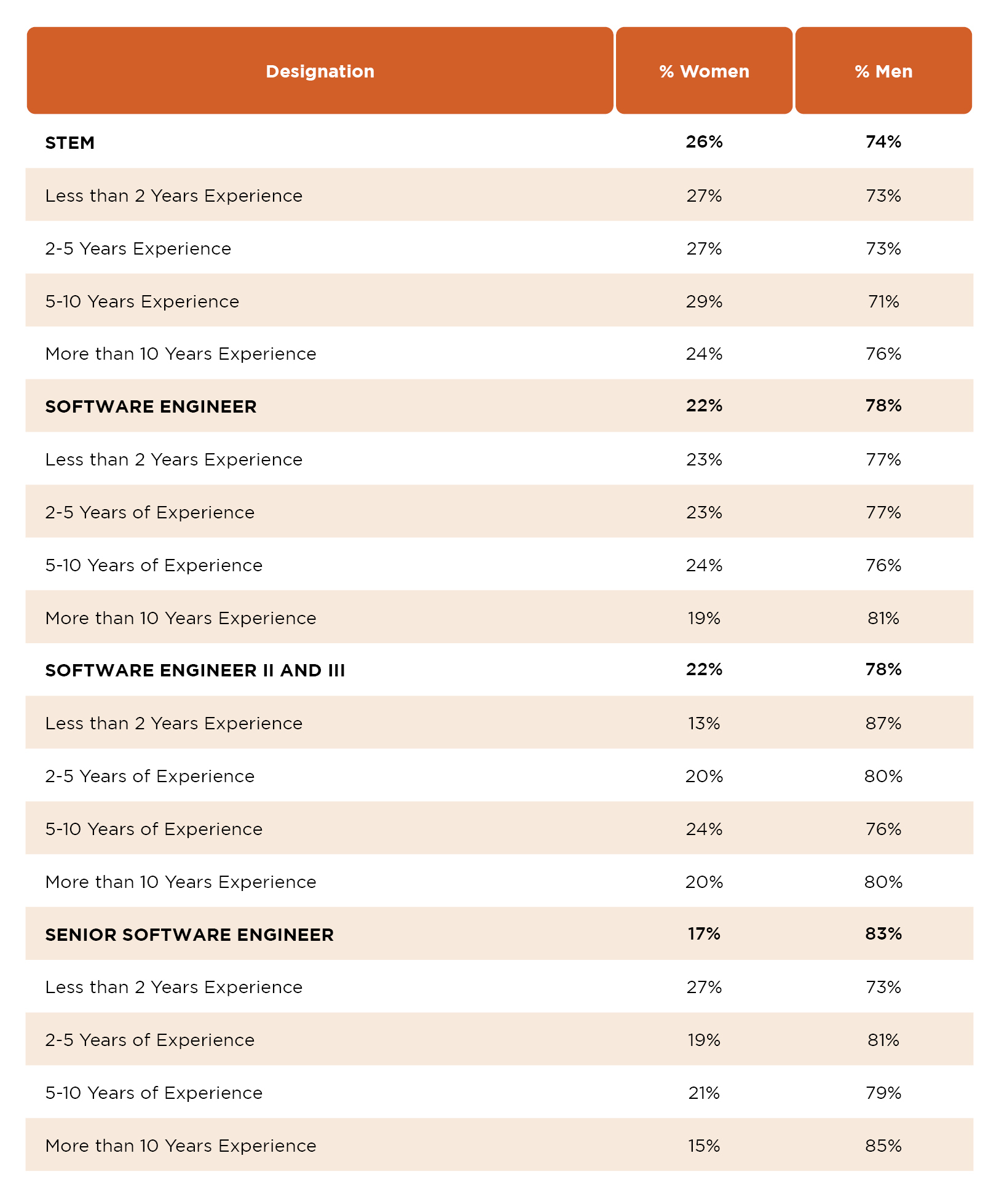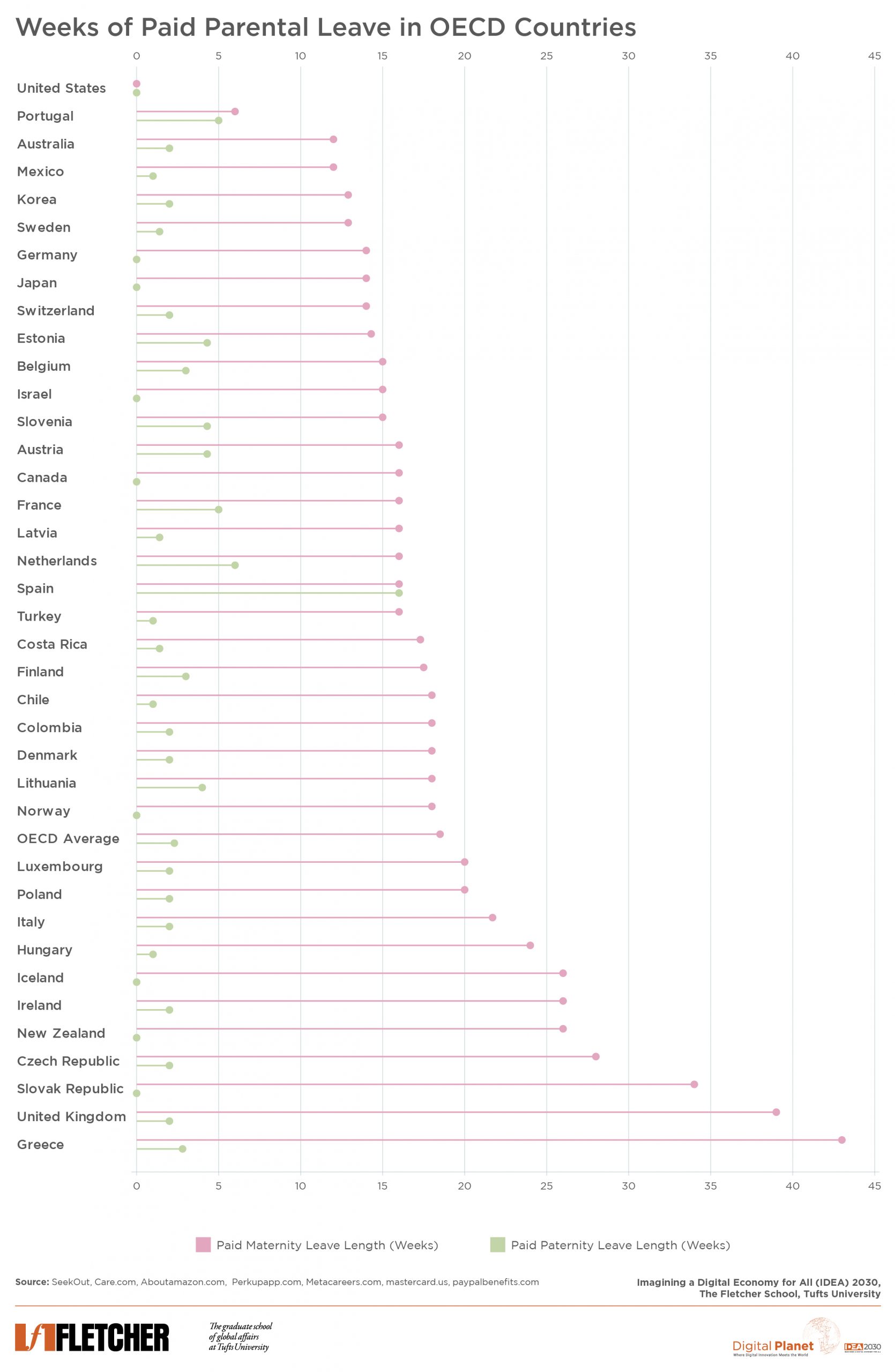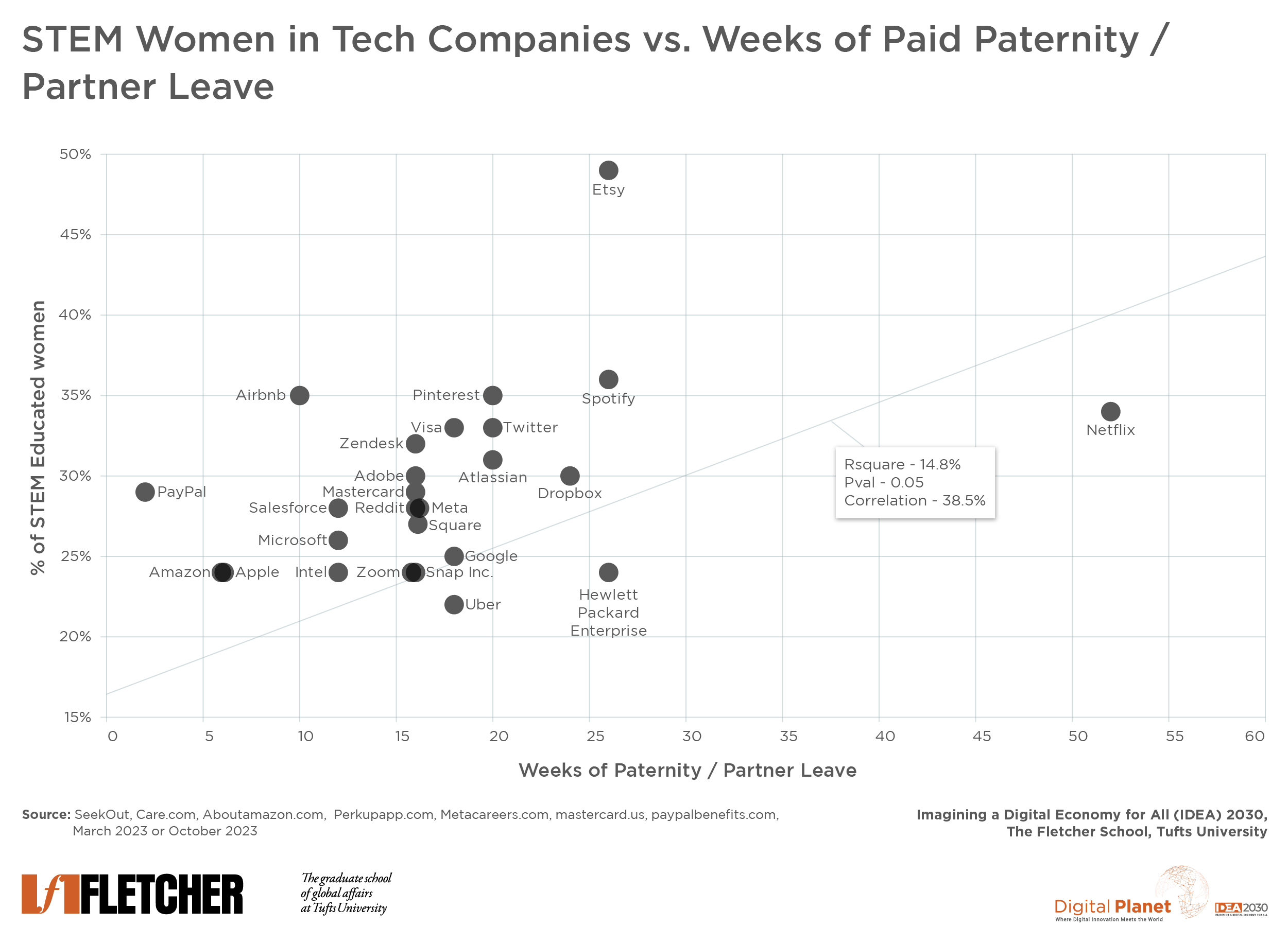Glass Ceilings, Broken Rungs, and Gummy Floors: Part 2
Women in STEM (Science, Technology, Engineering, and Mathematics)
Women remain under-represented in high-paying technical and decision-making roles in STEM professions. This disparity is a vexing problem and the Achilles’ heel of the entire technology industry. Beneath data in the aggregates lies a nuanced and varied picture—across both the academy and industry—of some breakthroughs worth highlighting and potentially emulating and several barriers that require urgent attention and targeted interventions. Achieving and sustaining gender parity will require concentrated and continuous efforts by decision-makers in academia, industry, and government.
Introduction
The month of March, designated by an Act of Congress in 1987 in the United States as “Women’s History Month,” is an occasion for Presidents to issue proclamations to honor the contributions of women and remind the nation of the hard work and long road still ahead of us to realize the goal of gender equality. For researchers, it is peak time to assess the progress to parity across various aspects of the economy and society and shine a light on the breakthroughs and the breakdowns in our march to equality.
Progress has been arduous, the contributions of women immense, and the dividends uneven.
Women have achieved impressive gains in educational attainment. Among adults aged 25 and older with bachelor’s degrees, one-half were women and have been earning master’s and doctoral degrees in greater numbers than their male counterparts. The pipeline holds promise, too: women accounted for six in ten college applications for the 2021-22 school year. The labor market and the economy continue to benefit tremendously from women’s participation. From 1970 to 2019, the proportion of women ages 25 to 64 in the labor force who held a college degree quadrupled to 45%. According to the Council of Economic Advisors, the US economy has been $2 trillion bigger since 1970 thanks to women’s labor participation. However, the dividends accrued to women are far from commensurate with their efforts and contributions.
The Women’s Bureau in the US Department of Labor has tracked women’s participation in the workforce by decade since 1920. Their data on the top ten occupations employing the highest number of women shows that “managers” as a category appears intermittently in some decades and not once in the top five.
Gains in skills and education notwithstanding, and despite near-equal representation in the workforce (women account for 48% of the overall labor pool), the gender gap in pay has remained stubborn for two decades. According to the latest Pew Research Center analysis of median hourly earnings of full-time and part-time workers in 2022, women continue to earn an average of 82% of what men earn, a mere two-percentage-point change since 2002. While the rate of tertiary-educated women in the labor force is closer to parity, the rate of women working in high-paying and decision-making roles is much lower overall. And lower still in STEM professions, where the earning potential is high. According to the Census Bureau, women account for barely over a fourth of the overall STEM workforce. Of the 70 STEM professions it tracks that pay well above the median American wage, women are consistently underpaid—even in occupations such as Natural Sciences, where they are over-represented—compared to their male counterparts in all bar one, computer network architecture, where 92% of the workers are men.
A relatively nascent urban phenomenon—of young women under the age of 30 earning “the same amount as or more than their male counterparts” in a few metropolitan areas, notably New York, Washington DC, and Los Angeles, which also score highly on the diversity of STEM talent in our recent analysis of AI hubs—offers a glimmer of hope of a breakthrough towards pay parity at entry and junior levels. It may yet prove ephemeral as the recent spate of layoffs threatens to reverse hard-won gains in diversity.
In this analysis, enabled by the talent database of SeekOut, an AI-powered Talent 360 platform, we examine how women fare in STEM education and careers compared to their male counterparts. Beneath the aggregate data lies a nuanced picture of some breakthroughs worth highlighting and potentially emulating and several breakdowns that require urgent attention, coordinated action, and concentrated efforts by decision-makers in academia, industry, and government. This work builds on our previous analyses of the travails of racial, ethnic, and LGBTQ+ minorities in STEM careers. While the fact remains, as detailed in our prior work, that Black and Hispanic women bear the greatest burden of discrimination in the workplace compared to their White and Asian peers, this investigation is focused on the experiences of women vs. men in STEM.
STEM is not a monolith. The outcomes for women within STEM disciplines at the university level and subsequently in careers paint a varied picture
STEM, as an acronym, is handy in differentiating the hard sciences from the humanities and galvanizing focus and resources to bring about systemic change. However, treating STEM disciplines and the careers they foster as a monolith, as is often the case in both research and popular media, is unhelpful beyond a point. It precludes the possibility of identifying extant differences within STEM and developing mechanisms to share better practices between disciplines and organizations.
As Reinholz et al. note in their peer-reviewed publication, there are as many differences between STEM disciplines as similarities among them. “While all of the STEM disciplines struggle with diversity in both the faculty and student populations, some disciplines struggle more than others,” the authors observe. They highlight the fact that there are “considerably more women faculty in the life sciences as compared with the physical sciences or engineering.” Consequently, the field of Biology attracts a greater number of female students, making it a “much more gender-balanced” discipline, as evidenced in our analysis of gender breakdowns across popular STEM majors (below).
The picture of STEM workers is even more varied. While female participation in STEM occupations has seen more than a threefold increase over a 50-year period since 1970, their current representation in the workforce—at about one in four, as noted above—is not proportional to the percentage of women with STEM degrees (37% as of 2020). The distribution of women across STEM occupations further belies the notion of a monolith. Unsurprisingly, biology-related professions record the highest female representation. Women are at near parity among medical doctors and have secured a commendable 17-percentage-point lead in pharmacy. Caregiving occupations, which are healthcare adjacent but excluded from the Department of Homeland Security STEM classification, are overwhelmingly staffed by women. While caregiving includes well-paid professions such as nursing, the predominance of women in this profession (8 in 10) perpetuates a stubborn gender and cultural stereotype that caregiving is an inherently feminine profession.
On the other end of the spectrum, the technology industry—a magnet for STEM and non-STEM majors alike, given its high wages—is one of the most prominent sectors that struggle with diversity. Our analysis below, using information from the 2020 and 2021 Equal Employment Opportunity report (EEO-1) of a selection of six major US technology companies—broadly representative of what is popularly referred to as Big Tech given their outsized influence on consumers’ everyday lives—each with a market capitalization of at least US$100 billion (Microsoft, Amazon, Netflix, Alphabet, Meta, and Apple), reveals some similarities: women comprise 43% of the combined workforce of these tech firms, and there is near parity at lower levels of the organizations, such as laborers and helpers and sales workers. Women are over-represented in administrative support roles. Unfortunately, their numbers thin out higher up the ladder in the decision-making and technical positions that are also among the highest paid.
However, beneath these aggregate industry-level observations lie interesting firm-level similarities, differences, and exceptions worth highlighting. A mixed picture emerges when the distribution of tertiary-educated women workers across the six tech firms is compared against the total pool of similarly educated women in the US workforce. Non-STEM graduates outnumber STEM graduates across all firms in our analysis. Where other firms fall short across the board, Netflix’s distribution stands out in that its proportions closely mirror that of the tertiary-educated female labor pool in the US across disciplines. Remarkably, Netflix leads its peers and the US labor pool in its proportion of female computer science graduates and non-STEM graduates. This suggests that on the issue of gender parity, big tech is not a monolith either, and firm-level strategies and policies related to attracting, nurturing, and retaining talent have a role to play in achieving and sustaining parity.
For women in technical roles, the floors seem more welcoming than before, but something is rotten in the state of the rungs, keeping the ceilings out of reach.
Exceptions notwithstanding, the low level of female representation in technical roles remains the Achilles’ heel of the entire technology industry. Zooming in on the distribution of STEM talent, sorted by designations, across the career ladders of the six tech majors in our analysis reveals a troubling picture of the extent of the disparity at middle to senior levels. Among workers with computer science bachelor’s degrees at entry (software engineer) and junior levels (software engineer ii and iii), women account for 22% of the workforce, which, while low on an absolute basis, is broadly in proportion with the overall talent pool of female computer science graduates (23%). Representation of women at middle and senior levels thins out gradually and plummets to single-digit percentages at the senior most technical levels. Save for technical-adjacent managerial positions, such as project and program management, where we see near parity, technical leadership roles remain out of reach for women. A recent study by McKinsey & Co, a consultancy, observed that while women are promoted at slower rates across all industries and roles, the gender gap for women in technical roles is particularly acute, with only 52 women promoted for every 100 men at the same level. The same report highlights “uneven early-promotions processes” across technology organizations as the reason for the perpetuation of the “broken rungs on the career ladder for women in technical roles,” causing many women to quit. This, if left uncorrected, risks reversing the gains we observe being made at the entry levels
This unevenness in the early promotions process bears out in the data we analyzed. More men with fewer years of experience seem to advance to the next rung than women in their cohort. Women remain in entry-level and junior roles for a longer time, compared to men, before being promoted. We also see disquieting evidence of thinning of the ranks: women with over ten years of experience—when an individual should be approaching a leadership role or holding a senior post—are quitting.
While work culture and a persistent lack of career advancement, among several other considerations, are likely contributory factors in the exodus of women with ten or more years of experience, the impact of childbearing and childcare on a woman’s career cannot be overemphasized. Indeed, a 2019 study led by the University of Michigan of “a nationally representative 8-year longitudinal sample of US STEM professionals” concluded that nearly half of the women—and twice as many as their male counterparts—leave full-time work after having their first child. Even among women who advance to senior positions, childcare is cited as a primary reason for quitting their jobs, according to the 2022 Women in the Workplace report. Left unstemmed, such a loss of productive talent from the workforce to take on unpaid care duties carries high economic and societal costs. Boston Consulting Group, a consultancy, projects that a failure to address this care crisis will cost the US economy US$290 Billion in GDP annually.
Parity begins at home. With thoughtful policies, workplaces can help encourage the equitable sharing of childcare responsibilities between spouses.
Working mothers have been disproportionately carrying the responsibility of childcare, often at a high cost to their professional prospects. Pew Research finds that “women, more than men, adjust their careers for family life.” The pandemic laid bare the disparity in parental duties among working couples, with mothers three times as likely to do most of the caregiving. Even among working heterosexual couples where women outearn their husbands, household work and childcare responsibilities fall disproportionately on the woman.
The United States has the dubious distinction of being one of seven countries in the world—the other six are tiny island nations—and the only rich nation with no federally mandated paid maternity leave program. Every other OECD country offers paid maternity leave of 18.5 weeks on average. Spain leads the way with 16 weeks of paid leave for each parent. Further, America’s OECD peers spend an average of 0.7% of their GDP on childcare; the United States spends a paltry US$500 compared to the OECD average of US$14,436 per child. Sisyphean efforts by the Biden administration to push a proposal with modest and much-needed increases to the childcare budget up the Hill have proved fruitless.
This vacuum created by congressional inaction leaves millions of working mothers and parents in limbo and at the mercy of employer policies. Some employers, most notably major technology companies, are stepping up to fill this void with tailored maternity and childcare benefits designed as incentives to attract and retain talent. Some are leading the way with paternity leave to encourage the equitable sharing of infant and early childhood care duties at home.
Our analysis of the paternal leave practices (weeks of paid partner/ paternity leave) of 26 technology companies and their gender diversity (% of STEM-educated women) shows a moderate correlation. Three-fourths of the companies in our study provide parental leave that is on par with or more generous than that of the most generous OECD country on this attribute. Again, Netflix stands out; their 52 weeks of paid paternity cover is equal to that of the second and third firms combined.
That tech companies offering generous paternity leave also tend to employ more STEM-educated women is not surprising; parental leave policies may be a successful talent attraction and retention tool. It is likely that companies making these efforts also offer other family-friendly benefits and healthy cultures that encourage team members to take advantage of such perks. Beyond promoting equitable sharing of infant care duties, studies show that encouraging paternity leave can help cushion the negative impact on women’s careers caused by needing to take more prolonged maternity leave absences.
Fixing the broken rungs and widespread adoption of childcare and paid parental leave policies by organizations will go a long way in stemming the exodus of mid-career and senior women, and may even make STEM professions more attractive and hospitable to them.
Implications for Action
- Deans of STEM programs in universities would do well to study the drivers of success of the biology discipline in achieving gender parity and invest in replicating similar approaches across the rest of STEM, especially in the computer science discipline. Market actors would benefit from investing in expanding the talent pipeline by encouraging girls in high schools to code through mentoring boot camps and providing scholarships to deserving high schoolers to pursue computer science majors across universities in America. Non-profits like Girls Who Code are leading the way in closing the gender gap, supported by foundations and businesses. Universities should partner with such efforts.
- Retention is just as important as recruitment. Broken rungs and uneven promotion processes in organizations exacerbate the problems of low female representation and high female attrition. Equitable processes are crucial to ensuring equitable outcomes.
- In the war for talent, thoughtful policies such as paid parental leave and on-site daycare can be successful in talent attraction across the board and retention, especially of mid-career women. Businesses would do well to consider these perks as an investment rather than a cost. Benchmarking against peers and competitors will help companies close the gap in their ability to attract, nurture, and retain female STEM talent and, in the process, achieve and sustain gender parity within their respective organizations.
Methodology
Data was collected using the proprietary database of SeekOut, an AI-powered Talent 360 platform. Candidates are not necessarily looking for work and are most often currently employed. We collected data on STEM graduates across job titles and industries by gender. SeekOut defines STEM graduates as those with a science, technology, engineering, or mathematics degree.
Data on parental leave was collected across OECD countries from here, while data on paternity/partner leave for tech companies within the US was gathered from different sources; see data below for references.
In this report, our definition of major tech companies includes six tech companies with a market cap of over $100 billion, namely Microsoft, Meta, Apple, Amazon, Netflix, and Google. Also, the software engineer hierarchy used in this study was from levels.fyi.
We gathered diversity data from the EEO-1 report of 6 Major tech companies— Microsoft (2020), Meta/Facebook (2021), Apple (2021), Amazon (2021), Netflix (2021), and Alphabet/Google (2020). Although the EEO-1 report is mandatory for every company with over 100 employees to submit to the EEOC office, companies are not mandated to publish this report. The EEO-1 report grouped over 2000 job codes and titles into ten job categories. Tech companies are more willing to publish their EEO-1 reports than other sectors, yet they seem less diverse than most. We created a big tech company that comprised these six companies.
All data and sources are available for download here.
By Ravi Shankar Chaturvedi and Abidemi Adisa, with contributions from Christina Filipovic, Digital Planet, The Fletcher School, Tufts University
What patterns and insights do you see in these charts? Share your thoughts with us on Twitter @dgtl_planet
Interested in learning more? Subscribe to our monthly newsletter Dispatches from the Digital Planet to stay up to date with our latest research and analysis



